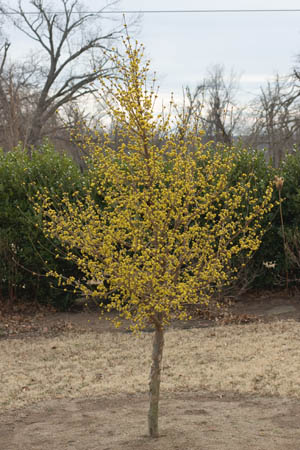 The plan was to have a Friday post every week this year showing off some “color” on our place, in an attempt to show, that with careful planning, one can have something in bloom in their landscape every week of the year—at least in North-eastern Oklahoma. Since this is the second Friday in February, and at the same time, only my second Friday-Floral-Photography post, you might conclude that I have failed. Let me adjust my little experiment by restating the premise.
The plan was to have a Friday post every week this year showing off some “color” on our place, in an attempt to show, that with careful planning, one can have something in bloom in their landscape every week of the year—at least in North-eastern Oklahoma. Since this is the second Friday in February, and at the same time, only my second Friday-Floral-Photography post, you might conclude that I have failed. Let me adjust my little experiment by restating the premise.
With careful planning, and the grace of God, one can have something in bloom in their landscape nearly every week of the year—at least in North-eastern Oklahoma.
 Yellow is not an uncommon color in the spring; daffodils and forsythia readily come to mind. But spring and yellow do not usually raise visions of dogwoods in the landscape. That is because you probably have never seen Cornus mas, or cornelian cherry dogwood.
Yellow is not an uncommon color in the spring; daffodils and forsythia readily come to mind. But spring and yellow do not usually raise visions of dogwoods in the landscape. That is because you probably have never seen Cornus mas, or cornelian cherry dogwood.
All of the dogwoods are easily recognizable by their straight, slender branches, always appearing in opposite pairs. Dogwoods are one of only four genera whose branches line up in opposite pairs. There is an acronym which helps you remember which ones they are: MAD Horse, which represents maples, ashes, dogwoods, and horse chestnuts—or buckeyes, whose nuts closely resemble chestnuts. The use of horse in common botanical names almost always indicates strong or poisonous. Don’t ever eat a nut from a buckeye. You will regret it.
The dog in dogwood comes from the fact that dogwood branches—strong, straight, and slender—make good “dogs” or skewers. The cornelian cherry also has a place in Greek mythology. Apollo, or one of those mighty warrior-god types, is said to have let loose a shaft from his bow from the top of Mount Olympus. When the arrow landed at the foot of the mountain, it took root and became the cornelian cherry, and hence became the preferred wood for making arrow shafts, because it grew so straight and strong. Of course the common name “cornelian cherry” is derived from a combination of the name of the genus Cornus with the fact that the fruit of the tree resembles a cherry.
 I know spring is officially more than a month away, but when I see yellow, it just has to be spring. In any case, spring can’t be too far off. Look at this next shot; I caught a number of honey bees working this little tree over. We planted this dogwood in our front yard as a way to celebrate and commemorate the marriage of one of our children. It has been in the ground about six years and has grown about a foot each year. It should top out at around twenty feet.
I know spring is officially more than a month away, but when I see yellow, it just has to be spring. In any case, spring can’t be too far off. Look at this next shot; I caught a number of honey bees working this little tree over. We planted this dogwood in our front yard as a way to celebrate and commemorate the marriage of one of our children. It has been in the ground about six years and has grown about a foot each year. It should top out at around twenty feet.
Not at all common in the nursery trade—especially here in Oklahoma—we had to locate this one on the internet. It came all the way from somewhere in North Carolina, if I remember correctly. As indicated by the close-up, the individual blossoms are anything but stunning. The cumulative effect is what makes this small tree stand out in the landscape. Add to that its early bloom, decorative peeling bark, and cherry-like fruit; and you get a small tree that is worth the extra trouble to find. It has not been hard to grow in our sandy soil. If you like yellow in February, you should get one.
Have a good weekend and Lord’s day.

I like your Friday Floral Fotos, especially the scientific explanations, because it is a nice intersection of your hobbies. Nice job this week! Spring IS coming, my hyacinths are coming up!
Mary, We looked for this specific little tree more than most, therefore we learned a good deal about it in the process. The particular variety name is “Sun Glow” and is noted for large, bright red edible fruit. No berries yet, as Cornelian Cherries are very reluctant to produce fruit. It might take fifteen or twenty years before it begins to bear fruit. Patience.